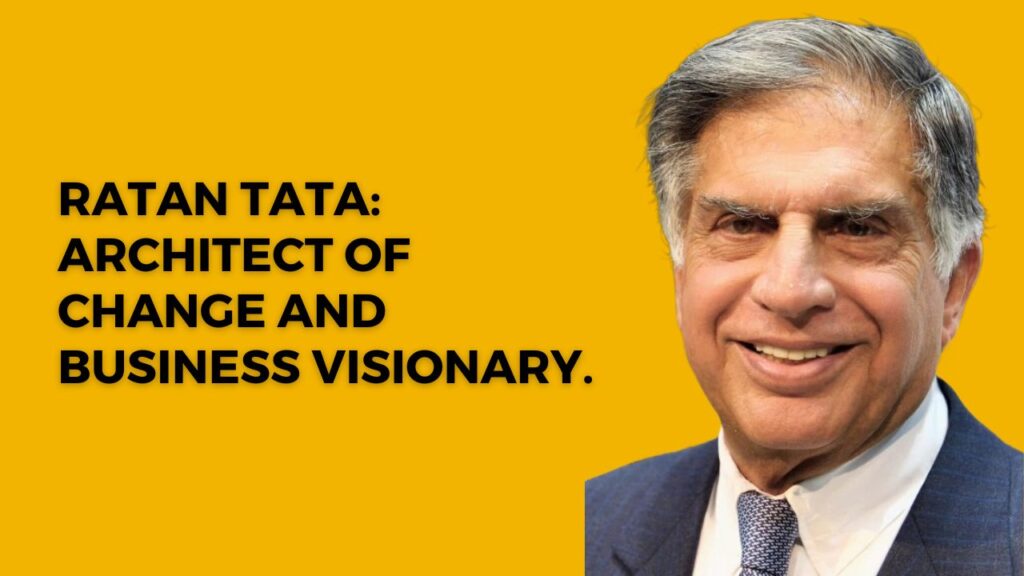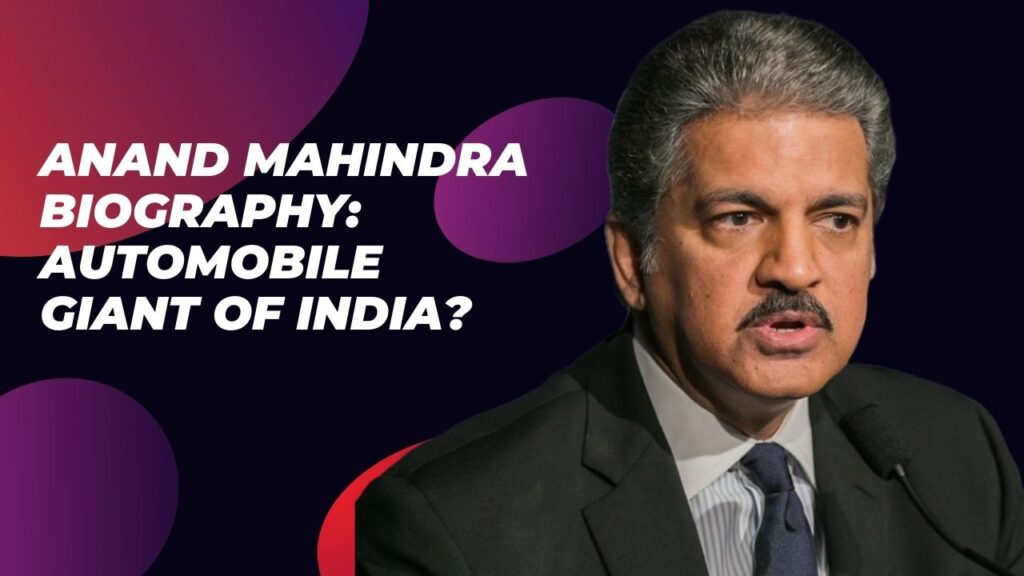Introduction about Ratan Tata:
Let us discover the extraordinary journey of Ratan Tata. He has been a name synonymous with business leadership and philanthropy. In this blog post, we will dive into the life of this iconic business leader. We will explore his contributions to the business world and understand his vision for Tata Group.

Description:
Ratan Tata is a leading Indian industrialist and former chairman of Tata Sons. He is known for steering the group to new heights. The Indian business fraternity applauds him for his commitment to innovation, ethical leadership, and social responsibility. From overseeing the Nano car project to being the mastermind of major acquisitions, he has made an impact far beyond the industry.
FAQs About Ratan Tata:
When was he born?
He was born on December 28, 1937.
Where was he born?
He was born in Bombay (Mumbai), Maharashtra, India.
Can we know some details about his early life?
Ratan Tata was born into the prominent Tata family and is the son of Naval and Sonoo Tata.
What is his educational background?
He has a degree in architecture from Cornell University, USA. He also studied the Advanced Management Program at Harvard Business School.
Can you provide information about his spouse and children?
He is not married and doesn’t have any children.
How did he start working with the Tata Group?
He began his career in the Tata Group in 1962. He started by working on the shop floor of Tata Steel.
When did he become the chairman of Tata Sons?
Ratan Tata became the chairman in 1991. He succeeded J.R.D. Tata.
What are some notable acquisitions under his leadership?
Some of his acquisitions include Jaguar Land Rover, Tetley, and Corus Steel. This showcases the group’s global expansion strategy.
Ground Breaking Nano Project, Philanthropic Work And Contribution To The Tata Group.
How did he make the Nano into a symbol of innovation?
The Nano project targeted creating an affordable car for the masses. This idea reflected his vision for affordable and accessible transportation for Indian families.
What philanthropic activities is he associated with?
Tata Trusts and Tata Medical Center are among his philanthropic efforts. He aims this work at improving medical access and empowering lower income communities.
How did he lead the group through economic challenges?
He implemented strategic restructuring, cost-cutting measures and diversification to work through the through economic downturns.
What is his approach to corporate social responsibility?
His commitment to CSR is evident in various initiatives like Nano’s sustainability and the Swach water purifier for rural communities.
What awards and honours has he received?
Ratan Tata has been bestowed with the Padma Bhushan and Padma Vibhushan which are India’s prestigious civilian awards.
How did he contribute to India’s aviation industry?
He was instrumental in launching Vistara. This was a joint venture with Singapore Airlines and marked the group’s re-entry into the aviation business.
What was his journey of rising through the ranks in the Tata Group?
His rise in the group saw him take on various roles which ultimately lead to his appointment as the Chairman of Tata Sons in 1991.
Can you provide information about the Tata Group’s businesses?
Tata Group is a global conglomerate with diverse business interests which includes steel, automotive, information technology, hospitality, and more.
How did he contribute to the growth of Tata Group?
He led the group through various strategic acquisitions, global expansion, and innovation thereby transforming it into a multinational corporation.
Respect Among Peers, Recognition For Automotive Business, TCS And Retirement.
What is the significance of Ratan Tata in the business community in India?
With his visionary ideas, ethical practices, and leadership he has in placed India on the global business map. Due to this he is highly respected in the business community.
How did he contribute to the Indian automotive industry?
He is known for the successful acquisition of Jaguar Land Rover. This brought global recognition to the Tata Motors brand.
When did Ratan Tata retire from the position of Chairman of Tata Sons?
He retired as the Chairman of Tata Sons in the month of December 2012. He was succeeded by Cyrus Mistry.
How did he contribute to Tata Consultancy Services (TCS)?
Under his able leadership, TCS expanded their business globally and became one of the largest IT services consulting companies.
How did he contribute to the establishment of Tata Nano’s manufacturing plant in Gujarat?
He faced several challenges and protests while establishing the Nano plant in Singur, West Bengal however he supervised its relocation to Gujarat.
Stance On Sustainable Business, Taj Hotel Restoration, EV Future.
What is his stance on sustainable business practices?
All through his career, he has advocated for sustainable and responsible business practices. To this date he continues to emphasize on environmental and social responsibility.
What is the significance of his involvement in the Taj Hotel restoration project after the 2008 Mumbai attacks?
His commitment to the restoration of the Taj Hotel symbolized resilience and determination of India as a nation after the terrorist attacks of 2008.
How did he contribute to the development of Tata Motors’ electric vehicles?
He envisioned innovation in electric vehicles which showcases Tata Motors’ commitment to sustainable and eco-friendly transportation. It also speaks about Ratan Tata’s desire of staying ahead of the curve in this business.
What initiatives has he undertaken for rural development in India?
He has been actively involved in initiatives for rural development through Tata Trusts. They work to address issues like healthcare and education.
How did he contribute to the Indian government’s response to the COVID-19 pandemic?
Ratan Tata pledged support and resources to assist in the fight against COVID-19, It showcases his absolute commitment to the national cause during difficult times.
What is his perspective on leadership succession within the group?
Ratan Tata has always emphasized the need of smooth leadership transitions within Tata Group to ensure its continuity and growth.
How did he work for the development of Tata Chemicals?
He supported initiatives in Tata Chemicals which focused on sustainable practices. This included water conservation and eco-friendly manufacturing processes.
Ratan Tata – Work With Research Foundations, Skill Development And Work With Tata Communications.
How did he contribute to the establishment of the Tata Institute of Social Sciences (TISS)?
During his time with TISS, he supported its initiatives in social sciences education and research.
How did he contribute to the development of Tata Power’s renewable energy projects?
Ratan Tata approved and implemented Tata Power’s initiatives in renewable energy thereby aligning with the global shift towards sustainable power sources.
How did he contribute to the establishment of the Tata Institute of Fundamental Research (TIFR)?
He has supported TIFR and has contributed resources to its initiatives in fundamental research and scientific advancements.
What initiatives has he undertaken for skill development and education in India?
He has been involved in initiatives that focus on skill development and education. These efforts aim to empower individuals and contribute to national development.
How did he contribute to the development of Tata Communications and its global network infrastructure?
He played a pivotal role in the expansion of Tata Communications. His leadership has positioned it as a key player in global network infrastructure and communication services.
Conclusion:
Ratan Tata’s legacy extends beyond just corporate success. Innovative leadership and a deep commitment to societal well-being have characterized his leadership. As we reflect on the great man’s journey, it is evident that his impact is not just measured through his business achievements. He has brought about a positive change to countless lives. The life story of Ratan Tata is a true testament of the transformative power of visionary leadership. Dear Readers, you may read some of our other articles on the “Home” page of our website.


